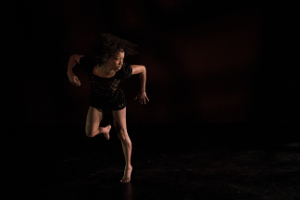Joys, Mournings, and Battles; Jehan Alain, Trois Danses, JA 120; Maurice Duruflé, Suite, Op. 5, Prélude et Fugue sur le nom d’A.L.A.I.N. Op. 7; Christopher Houlihan, organ, Rice Memorial Organ Aeolian-Skinner Op. 909 (1933), All Saints Church, Worcester, MA; Towerhill TH-72025, ©2010, TT 63:45, $19.95.
This CD gets its title from the names of the three movements of Alain’s Trois Danses, “Joies, Deuils, Luttes,” the last work he composed, begun in 1938 and completed in 1940 just two months before his death in battle early in World War II, which is the central panel in the CDs triptych that opens with Duruflé’s Suite and closes with his homage/tribute to Alain. The works were all composed within a decade of the building of the instrument, the two Duruflé pieces in 1934 and 1942 respectively. The Suite is also in three movements: Prélude, Sicilienne, and Toccata.
These composers belong to the third generation of great French organ symphonists, grandchildren as it were of the first, César Franck, who inaugurated the style, inspired by the magnificent instruments of Cavaillé-Coll, one of which was installed in 1858 in the church of Ste Clothilde, where he played for the last 14 years of his life. The second generation included, in alphabetical order, Alexandre Guilmant, Louis Vierne, and Charles-Marie Widor. There were others, to be sure, but their names are known to all, and some of them actually came to America to perform, so were known here more than simply as names. Alain’s sister Marie-Claire has played Duke’s Flentrop organ; I was in the audience on one such occasion. Their teacher was their father Albert, who was a pupil of Vierne, as was Duruflé. Both Alains studied organ with Marcel Dupré, another Vierne pupil, at the Paris Conservatoire; Jehan and Duruflé were composition students of Paul Dukas, who is the dedicatee of the Suite. Thus much ties these works together; all of this is to say that this is a nicely conceived program. The music is not, however, the kind of brilliant triumphal sort that comes to mind when you think of Vierne and Widor organ symphonies. There are bright moments, but most of it is contemplative, with a somber side even, perhaps the result of the era of the Great Depression and the War.
The instrument is among the handful of enormous Aeolian-Skinner products that cheap labor during the Depression made possible which would otherwise probably never have come into existence. This one, one of the first after the merger of the two firms, was designed by G. Donald Harrison and has been consistently maintained. (Duke Chapel’s Aeolian was the last, in 1932, of its pre-merger products, and the only major one built for a church.) Although enlarged and modified subsequently, as technologies evolved, it has recently been largely restored to its original sound – more work remains to complete this task. It has 7292 pipes, four manuals, and a pedalboard. It has an enormous dynamic range and broad spectrum of tonal color. The history of the instrument given in the booklet is by Robert Glasgow and Peter Stoltzfus Berton, the latter the church’s current organist and choir director. The complete listing of the instrument’s pipes and couplers is also provided along with a color photo of its console.
Houlihan (b. 1987) is very young, only 23, and a child prodigy at the organ. He shared the soloist spot with Joshua Bell at the Hartford (CT) Symphony when a college senior at 21. Since his freshman year, he has had his supporters, the “Houli Fans” begun by classmates that has a Facebook presence and members worldwide. He was a graduate student at Juilliard when the recording was made. One might well expect that someone this young would have difficulty capturing the mood of works such as these, but this is not the case; his playing is remarkably sensitive. He also authored the fine program notes in the accompanying booklet; his photo with an organ console behind him appears on the booklet’s back cover.
A problem that I encountered with the recording is that of volume: this music was composed in an era when there was much less ambient noise in the environment than is the case today. While it is possible to escape some of this in the interior of a large church such as All Saints, it is not necessarily possible inside a house. Some of the quieter moments were quiet enough that they were difficult to hear, yet turning the volume up would have made the louder moments unpleasantly loud, and altering the volume during a listening betrays the intent of the composer. This is, however, a minor quibble with a lovely and impressive product.
Note: Christopher Houlihan will be performing at Christ United Methodist Church in Greensboro on January 14, 2011.











